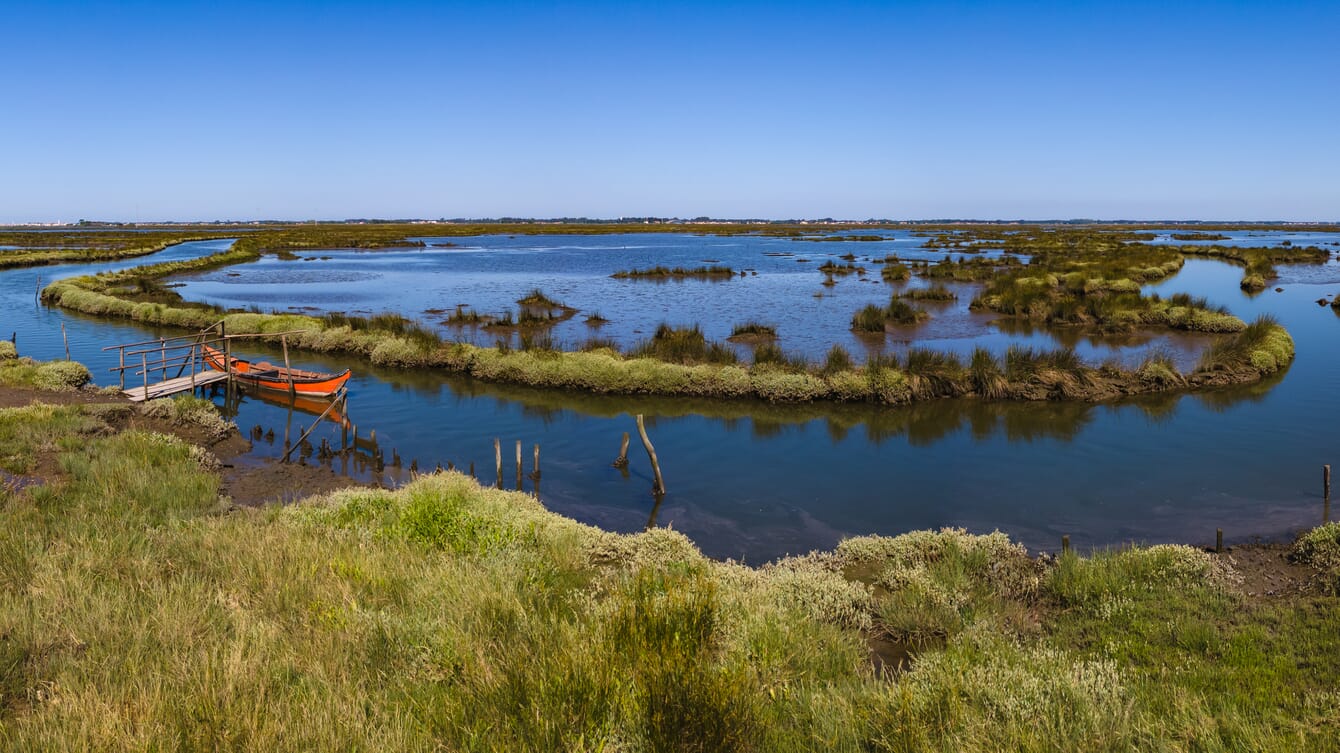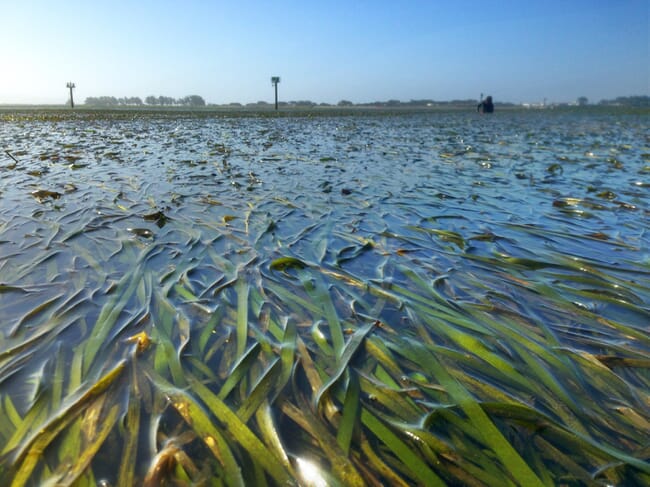
A study conducted by the Centre for Environmental and Marine Studies (CESAM) at the University of Aveiro (UA) found that photosynthetic organisms like microalgae can remove thousands of tonnes of atmospheric carbon each year. This finding highlights the need to preserve the tidal estuaries and ecosystems where microalgae live.
Published in the journal Frontiers in Marine Science, the study refers to the contribution of the two main communities of "primary producers" of the Aveiro Lagoon and other tidal estuaries: the microalgae living in the water (phytoplankton) and those living on the sediment surface of the intertidal zone (microphytobenthos). This study is the result of field campaigns, implemented under the BioChangeR Project, and resulted from the collaboration of researchers from the Departments of Biology and Physics of the University of Aveiro and Instituto Superior Técnico.
"Primary producers are organisms, like some bacteria, algae and terrestrial plants, which are capable of photosynthesis", explains biologist João Serôdio who, along with Silja Frankenbach, João Ezequiel, Sandra Plecha, Leandro Vaz, João Miguel Dias and Nuno Vaz, signs the work. The study quantified the carbon fixed by the photosynthetic activity of these two communities, "but there are others that also contribute to the overall balance of the ecosystem, such as macroalgae, seagrass and saltmarsh plants".
"The total carbon removed naturally in the Aveiro Lagoon will thus certainly be higher than that estimated in this study", states João Serôdio.

© Melissa Ward, UC Davis
The carbon capture of these organisms, explains the biologist, "is associated with the photosynthetic process, the most important biochemical process for life on Earth, on which the overwhelming majority of living things, including humans, depend, through which carbon from the atmosphere (or dissolved in water) is used to 'manufacture' new organic matter and thus support the entire ecosystem".
The results achieved by the Aveiro research group are in line with those found for other estuarine ecosystems. In this sense, explains João Serôdio, the Aveiro Lagoon does not differ much from other areas such as the Tagus Estuary or the Formosa Lagoon.
"What was new in this study was the parallel monitoring, in various places of the Aveiro Lagoon and with a great temporal resolution, of the photosynthetic activity of these two communities". This allowed the biologists "to discover that the intertidal sediment zones, often ignored or considered uninteresting, are in this ecosystem the most important in terms of carbon sinks."
"Despite the high rates of carbon sinks which occur naturally in the Aveiro Lagoon, estimated in our study at 12,400 tonnes of carbon per year, each one of us emits, on average, and considering only the burning of fossil fuels, 1.3 tonnes of carbon per year", points out the biologist.
But he leaves a warning: "The carbon removed by the totality of the primary producers from the water and sediments of the whole Aveiro Lagoon will hardly be enough to compensate for the carbon emitted by 10,000 Aveiro citizens".




